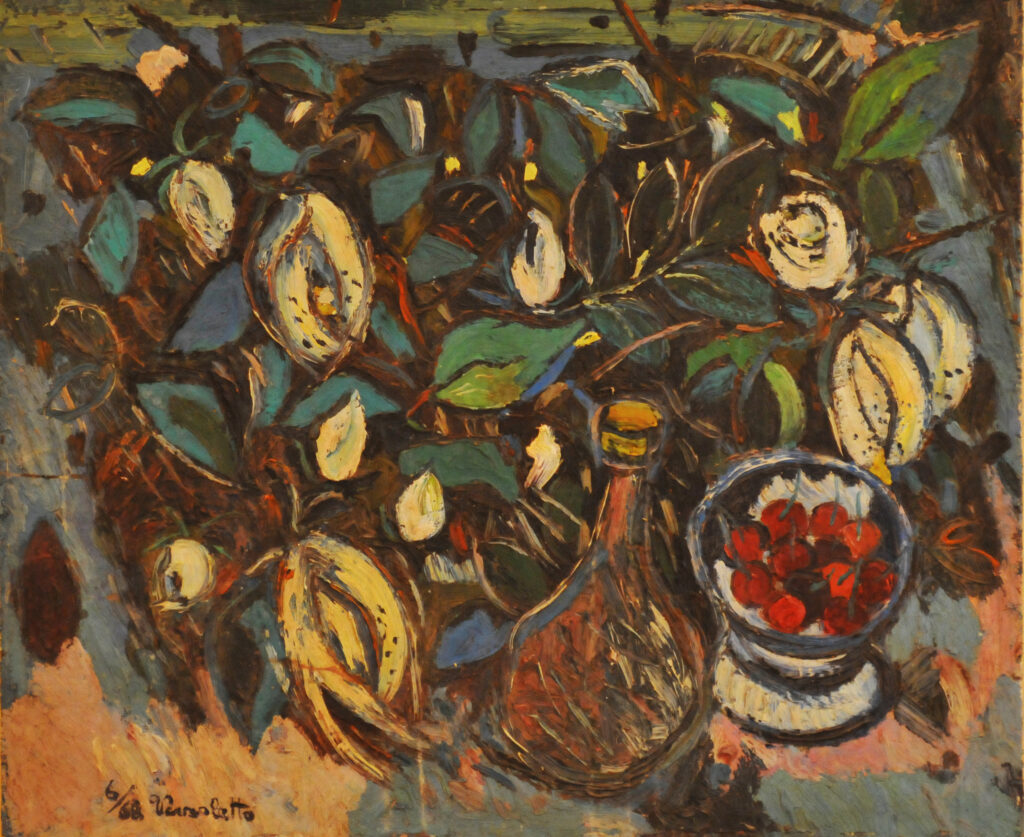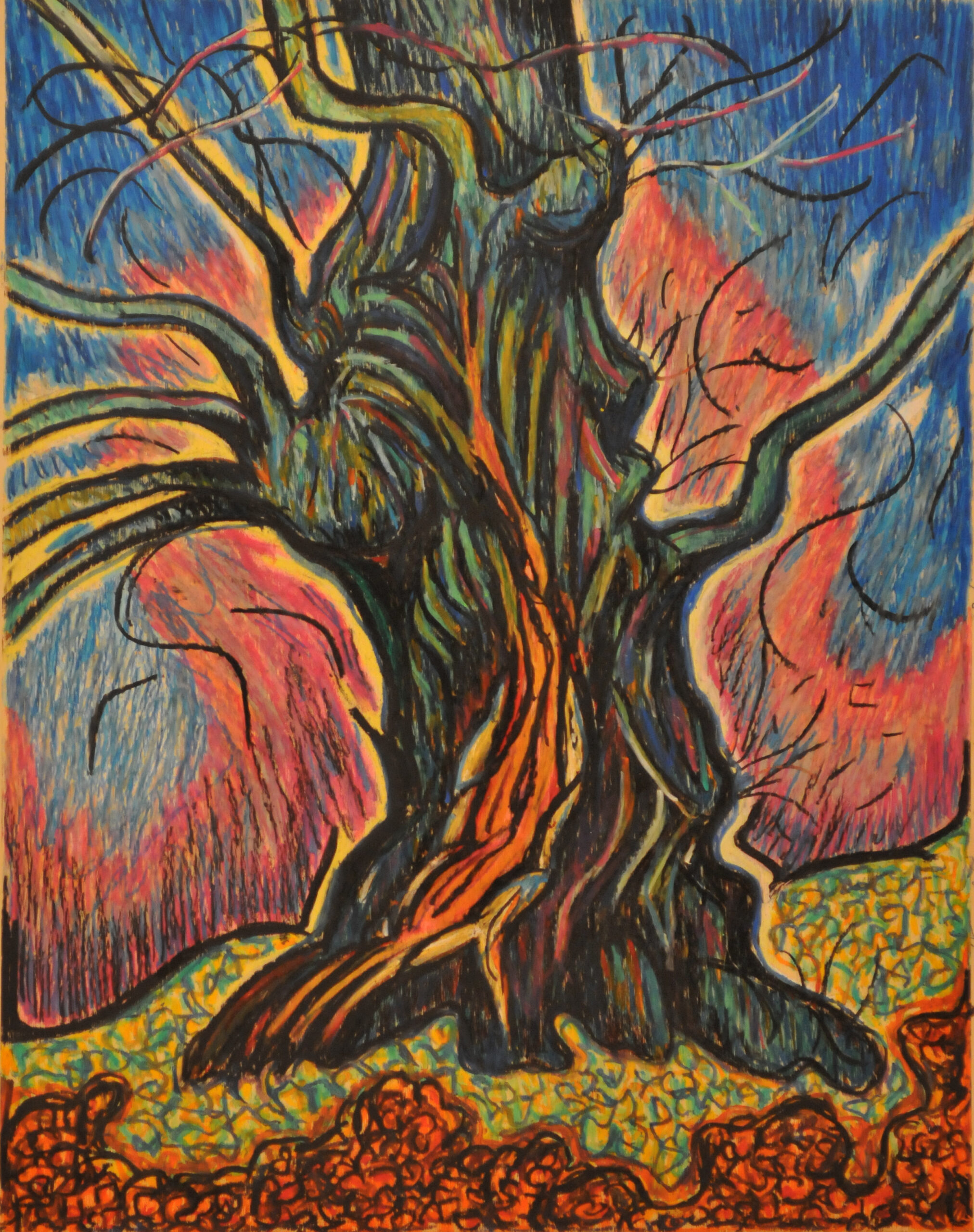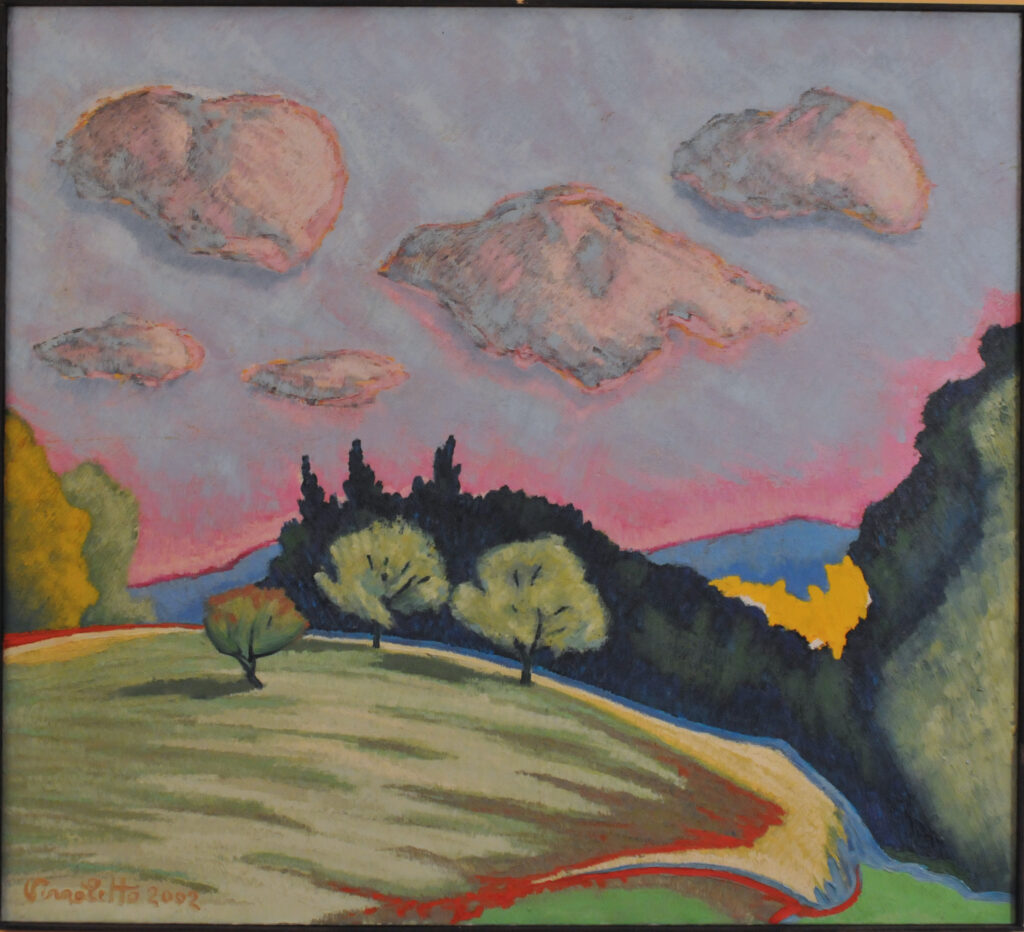ALBERICO VERZOLETTO: ARTISTIC THEMES
STILL LIVES

Verzoletto pays special attention to the details in still lives, especially when painting sunflowers. He does not portray them blooming in the field. Instead, like Van Gogh, he depicts them when they have already been plucked, at the start of their decay. Put into simple vases or lying on tables, they thus appear as a memento of the transience of existence, as reflections on the ephemeral and frail nature of beauty. The spectacle of nature is not meant to last in reality, but it is forever fixed in the work. The artist, through the practice of art, creates an intriguing dialogue between himself, the surrounding world and others, represented by the viewers of the work.
The flowers stand on the canvas in an almost abstract dimension, bringing real, recognisable objects to the brink of abstraction. The structure of the image is almost primitivistic, contrasting against the masterful chromatic layering, achieving a result that shows all the knowledge and the mastery of the artist.
CHESTNUT TREES
The painter had a profound love for trees and the infinite geometric patterns of the intertwined branches and trunks. He felt the threat posed by a consumeristic society pointed more and more towards the exploitation of land, and yearned for a greater harmony between the human and arboreal species.
He was particularly fond of chestnut tree, with which he had established a real physical and mental connection. The chestnut had a central role in the history of his valley, as well as in his personal story, so much as to give birth to the imaginative mythology that characterises his works on this subject. The chestnut thus becomes the symbolic cornerstone of the relationship between man and tree, with an almost totemic value. The representation of the tree is approached more as a portrait rather than as a generic landscaping element, focusing on the peculiar identity of each individual. It comes as no surprise then, that in his vast production some arboreal subjects come back time after time, becoming recognisable for their proportions, their posture, and some physical attribute, just like human beings.
The subject is often an excuse to indulge in the pleasure, both physical and mental, of following–first with the eyes and then with the paintbrush–the web of lines on the canvas. A log, a trunk, a bush takes the whole scene, taking on shapes and colours that switch their natural role with an expressive-emotional one. Painting has the power to transform the perception of shapes, so that the painted image becomes more important than the real subject.
Painting becomes a way to let the imagination flow, almost touching Surrealism and Abstractism, with the final goal of capturing the vital essence, the primeval energy emanating from the tree. Every painted chestnut becomes a sacred image, akin to a genius loci, a natural and supernatural spirit of the lands, an ancient guardian of Biellan hills. The titles, being toponymical, confirm this: Egro, Cesara, Strona, just to mention a few. Pushing further into the interpretation of the chestnut series, one can sense the Platonic Anima Mundi in every tree Verzoletto paints: it is a poetic, almost mystic interpretation, one held dear by the painter’s wife and his friend, Gilardino, according to whom the chestnut holds the soul of a place in itself, and the artist possesses the necessary sensibility to perceive it and show it to the public. The title of the cycle, The Chestnut Fairytale, evokes ancient initiation rites and legends, linked to the more mysterious aspects of nature.
The production of works dedicated to trees is vast: the paintings created in autumn are the majority, permeated with intense energy, obtained through the masterful application of contrast between warmth and cold, light and darkness, as well as qualitative and simultaneity contrast. The mastery of colour theory is brought to the extreme in the works. Spring and summer works are lesser in number, with a more subtle palette. He often opts for oil pastels on panels–though we have some oil paintings on canvas–since it is the technique that best enhances the strength of the gesture and the saturated, viscous colours.

LANDSCAPES

Verzoletto has always dedicated himself to the practice of landscape painting, but he does not paint typical vistas, he does not illustrate pleasant memories linked to familiar places, he does not follow the descriptive rhetoric intrinsic to landscape painting. Rather, he transforms places according to his own internal model, using apparently simple means. He charges the colour with vital energy, obeying expressive rules, rather than descriptive ones, and applying the laws of light refraction and the projection of shadows subjectively. The painter has the natural ability to capture the soul of places, wherever he is: it is a poetic perception that goes beyond the geographical and environmental specifics. Angelo Gilardino defines Alberico Verzoletto as “[…] a patient pictorial distiller of his own splitting poetical intuitions”.
On location, he creates sketches en plein air, a few lines with annotations regarding the combination of colours he will put into the paintings, in order to secure the intuition into his memory. Later, in the studio, he creates more than one painting from a single sketch. Every painting is the result of consecutive layers of colour based on memory, as well as an internal image of the place mentally evoked by the painter. The power of narrative invention transfigures and animates originally inanimate places, that become mysterious and evocative, even charged with zoomorphic appearances.
His art, even though it underlines an uninterrupted and intimate dialogue with his Piedmont, shows an energy capable of embracing stimuli coming from any place and in any season, on the rare occasions he visits Liguria, Tuscany, Umbria, Sardinia.
While travelling, he takes notes of impressions, makes sketches and takes pictures, gathers material he’ll rework back in the studio. Some places introduce themselves with all their baggage of historical impressions and legends, so that all that’s left is for him to become their mouthpiece. In other places, where nothing but ordinary, plain reality reigns, the painter can summon streams of consciousness and feelings, charging them with metaphors and symbols. In Liguria, trees become a sacred presence, buildings are metaphysical enigmas. In Tuscany, the anthropomorphic appearance of the hills grows stronger with imaginative tension, reaching its apex in the crepuscular and nocturnal paintings. Sardinia presents Verzoletto with the possibility to confront himself with the sea, a theme he approaches conscious of the lesson of the Impressionists: colour, soaked in light, becomes the protagonist, enhancing the atmospheric view. The light at dusk animates the earth and the water in a joyful feast of colour harmony and contrast. In Piedmont, his gaze becomes mild and benevolent again, it goes back to caressing the roundness of Biellan hills, in paintings where human presence is a negligible detail. “It’s the place I care for, rather than man”. On this note, his words are enlightening:” Love for nature is very much alive in me; naturally drawn as I am, whenever possible, to walk in the countryside or in the town, with my mind free of worries, my eyes are presented with many views that stir deep feelings in me. One of my problems, before I started painting, was precisely that of being unable to fix, into something lasting, these sensations bestowed upon me by nature. Discovering painting solved this problem for me: I’m able to express this desire through colours, fixing everything that hits my sensibility and makes my feeling vibrate on the canvas”.
